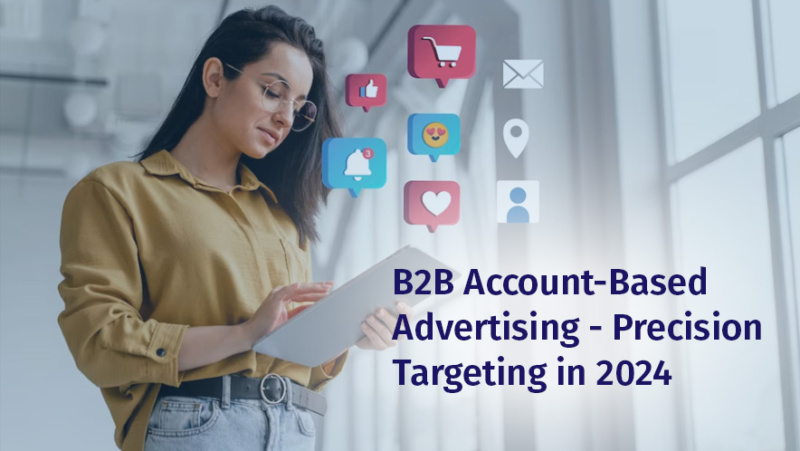Cross-channel marketing involves utilizing multiple marketing channels to reach and engage with a target audience. In this approach, businesses integrate various communication channels, both online and offline, to create a cohesive and unified experience for their customers. The goal is to deliver a consistent message and brand experience across different platforms, fostering a seamless and integrated customer journey.
Channels in cross-channel marketing can include
Digital Channels:
- Websites
- Social media platforms
- Email marketing
- Mobile apps
- Search engine marketing (SEM) and search engine optimization (SEO)
Offline Channels:
- Television
- Radio
- Print media (newspapers, magazines)
- Direct mail
- Events and sponsorships
By leveraging multiple channels, businesses can increase the visibility of their brand, enhance customer engagement, and optimize the overall impact of their marketing efforts. Cross-channel marketing recognizes that consumers interact with brands through various touchpoints, and by maintaining a consistent message and experience across these touchpoints, businesses can build stronger connections with their audience. Additionally, it allows for more targeted and personalized communication, as marketers can adapt their messages based on the preferences and behaviors observed on different channels.
Effective cross-channel marketing requires careful coordination and integration of strategies across all chosen channels, as well as the use of data and analytics to understand customer behavior and preferences. This approach acknowledges the changing landscape of consumer interactions and aims to adapt marketing strategies accordingly.
Consistent messaging in cross-channel B2B marketing holds significant value for several reasons. It builds trust among B2B customers. When a coherent message is conveyed across various channels, it establishes a sense of reliability and trustworthiness, crucial in B2B relationships.
It enhances brand recognition. Consistency in messaging makes your brand easily identifiable, increasing the likelihood that B2B customers will remember and consider your business.
Streamlines communication in the complex B2B landscape, where sales cycles involve multiple decision-makers. It reduces confusion and facilitates a smoother decision-making process.
Moreover, it reinforces key value propositions. Consistency ensures that your unique benefits are communicated effectively, helping B2B customers understand and appreciate what your business offers.
Consistent messaging strengthens your positioning in the market. Whether positioning as an industry leader or an innovator, a unified message helps differentiate your business from competitors.
It improves customer experience by providing a cohesive journey across various touchpoints, contributing to satisfaction and loyalty.
Consistent messaging facilitates multi-touchpoint engagement. B2B customers interact through diverse channels, and a consistent message ensures a unified brand identity, promoting a more integrated and effective engagement strategy.
Lastly, it adapts to diverse audiences. While maintaining consistency, messaging can be adapted to resonate with different segments, addressing the varied needs and preferences within the B2B audience.
In essence, consistent messaging in cross-channel B2B marketing is instrumental in building trust, enhancing recognition, streamlining communication, reinforcing value propositions, strengthening market positioning, improving customer experience, facilitating multi-touchpoint engagement, and adapting to diverse audiences.
Creating Unified Messaging
Ensuring consistent messaging across channels is a strategic endeavor requiring clear brand articulation and comprehensive guidelines. Begin by establishing a succinct brand message that encapsulates your core values. Develop and share detailed brand guidelines, encompassing messaging, tone, and visual identity, to guide content creation.
Centralizing content creation or assigning a dedicated team for messaging coherence facilitates oversight. Employ a content calendar for strategic planning, ensuring messages align across various channels over time. Foster collaboration among teams involved in marketing, sales, and customer service to maintain a unified approach.
Leveraging marketing automation tools streamlines message coordination. Regular training sessions and open communication cultivate a shared understanding of the importance of consistent messaging. Monitor and analyze performance data across channels, enabling informed adjustments to your strategy.
Unified messaging significantly enhances brand recognition. Consistent messages increase memorability, enabling consumers to recognize and connect with the brand more swiftly. Positive impacts on brand perception, emotional connections, and trust are cultivated, differentiating the brand from competitors. Brands with consistent messaging stand out, building stronger customer loyalty through stable and authentic communication.
Moreover, the positive impact on brand perception is substantial. Brands that communicate a consistent message are perceived as more trustworthy and reliable by consumers. This perception is a valuable asset in building long-term relationships and fostering customer loyalty.
Consistency in messaging goes beyond mere recognition; it builds emotional connections with your audience. When consumers consistently experience a brand message that resonates with them, it establishes an emotional link. This emotional connection is a powerful driver of brand preference and advocacy, as consumers are more likely to support brands that evoke positive emotions.
In a market crowded with competitors, consistent messaging becomes a key differentiator. Brands that deliver a cohesive message stand out, creating a distinct identity that sets them apart. This differentiation is essential for capturing consumer attention and loyalty in a marketplace where choices abound.
Perhaps one of the most crucial benefits of unified messaging is its impact on customer trust. Consistency in communication signals stability and authenticity. Consumers are more inclined to trust a brand that maintains a consistent and reliable message over time. Trust is the foundation of strong customer relationships, influencing purchasing decisions and fostering brand advocacy.
The value of consistent messaging in cross-channel marketing is evident in its ability to enhance brand recognition, build trust, differentiate from competitors, and foster emotional connections. As businesses navigate the dynamic landscape of B2B marketing, a unified message serves as a cornerstone for establishing a strong and enduring brand presence.
Channel-Specific Tactics
Tailoring strategies for each marketing channel involve understanding the unique dynamics and preferences of the audience on that platform. By adopting channel-specific tactics, businesses can optimize their efforts, maximize engagement, and ultimately drive more meaningful interactions with their target audience.
Here are some tailored Approaches for different marketing channels:
Email Marketing
- Personalized Campaigns: Customize email campaigns based on customer segmentation and preferences. Personalization increases engagement and conversion rates.
- Automation for Nurturing: Implement automated workflows for lead nurturing. This ensures that leads receive relevant content at different stages of the buyer’s journey.
Social Media Marketing
- Platform-Specific Content: Tailor content for each social media platform. Understand the unique characteristics of each platform and adapt your content to maximize engagement.
- Interactive Content: Leverage interactive content such as polls, quizzes, and live videos to encourage participation and boost audience interaction.
- Influencer Collaborations: Collaborate with influencers relevant to your industry. Influencers can amplify your message and reach a broader audience.
Content Marketing
- Targeted Blog Content: Create blog content that addresses specific pain points and interests of your target audience. This establishes your brand as an authority and attracts relevant traffic.
- Diverse Content Formats: Diversify content formats, including infographics, videos, and podcasts. Different formats cater to varied audience preferences and improve overall engagement.
- SEO Optimization: Optimize content for search engines. Use relevant keywords and ensure your content is easily discoverable, driving organic traffic to your website.
Search Engine Marketing (SEM) and Search Engine Optimization (SEO)
Keyword Strategy: Develop a comprehensive keyword strategy for both paid (SEM) and organic (SEO) efforts. This ensures visibility in search engine results for relevant queries.
Quality Landing Pages: Create optimized landing pages for your SEM campaigns. A well-designed landing page improves conversion rates by enhancing the user experience.
Regular SEO Audits: Conduct regular SEO audits to ensure your website aligns with search engine algorithms. This involves checking for broken links, optimizing meta tags, and improving overall site performance.
Direct Mail Marketing
Personalized Direct Mail: Tailor direct mail campaigns based on customer data. Personalization can include the recipient’s name, relevant offers, or even personalized URLs for tracking.
Integration with Digital Channels: Combine direct mail with digital channels for a cohesive strategy. For example, include QR codes linking to online content or personalized landing pages.
Events and Webinars
Targeted Invitations: Customize event invitations based on the interests and preferences of your target audience. Highlight the value they’ll gain from attending.
Engagement During Events: Encourage audience engagement during events or webinars through Q&A sessions, polls, and interactive discussions. This enhances the overall experience.
Measuring Cross-Channel Success
Customer engagement metrics, such as click-through rates (CTR), open rates, and social media engagement, offer insights into audience interaction across various channels. High engagement signifies active audience participation.
Conversion rates from different channels are crucial metrics to monitor, providing insights into how well each channel contributes to actual conversions.
Attribution modeling, including first-touch, last-touch, and multi-touch attribution metrics, helps understand the contribution of different channels to the customer journey, guiding resource allocation.
Customer journey metrics, including time to conversion, path analysis, and touchpoint analysis, offer insights into the role each channel plays in influencing the decision-making process.
Return on Investment (ROI) is assessed by comparing revenue generated to the investment in each channel, helping prioritize those channels delivering the most value.
Customer retention metrics, such as retention rates and repeat purchase rates, assess the ability of cross-channel strategies to not only acquire but also retain customers over time.
Customer satisfaction metrics, including Net Promoter Score (NPS) and customer satisfaction surveys, gauge customer sentiment and the likelihood of engagement across multiple channels.
Channel-specific metrics, such as platform-specific metrics on social media, provide granular insights into the performance of each channel.
Industry Benchmarks for Cross-Channel Campaign Performance
For email marketing, the average open rate is 15.1%, and the average click-through rate is 2.1%, offering general benchmarks for comparison (Source: Campaign Monitor).
In social media marketing, the average engagement rate on Facebook is 0.17%, providing a baseline for assessing performance across platforms (Source: Rival IQ).
Content marketing benchmarks indicate an average blog post conversion rate of 2.35%, with variations based on content type and industry (Source: Impact).
For search engine marketing (SEM), the average click-through rate (CTR) for Google Ads is 1.91%, offering insights into ad performance (Source: WordStream).
Direct mail marketing sees an average response rate of 4.9% for house lists and 1.0% for prospect lists, with results influenced by targeting and offer relevance (Source: Data & Marketing Association).
In events and webinars, the average attendance rate for webinars is 36%, providing a benchmark for virtual event performance.
Note: Benchmarks are general indicators, and individual campaign performance may vary based on industry, target audience, and specific campaign characteristics. Regular review and adjustment based on campaign-specific metrics are essential for optimizing cross-channel performance.
In conclusion, the strategic implementation of cross-channel marketing in the B2B landscape is a powerful tool for creating cohesive and impactful campaigns. By integrating various online and offline channels, businesses can effectively increase brand visibility, engage customers, and optimize their overall marketing impact. The recognition that consumers interact with brands through diverse touchpoints underscores the importance of maintaining consistent messaging and experiences across these channels.
Consistent messaging holds immense value in B2B marketing, fostering trust, enhancing brand recognition, streamlining communication, and reinforcing key value propositions. This approach not only improves customer experience but also strengthens a brand’s positioning in the market, making it a vital aspect of successful cross-channel campaigns.
The creation of unified messaging requires a strategic effort, including clear brand articulation, comprehensive guidelines, and collaboration across marketing teams. Leveraging marketing automation tools and analyzing performance data contribute to the ongoing success of this approach.
Furthermore, channel-specific tactics tailored to platforms such as email marketing, social media, content marketing, and more enable businesses to optimize their efforts and drive meaningful interactions. These customized approaches acknowledge the unique dynamics and preferences of each channel’s audience.
Measuring cross-channel success involves tracking various metrics, including engagement rates, conversion rates, attribution modeling, and customer satisfaction. Benchmarks provide a comparative perspective, but it’s crucial to note that individual campaign performance may vary based on industry, target audience, and specific campaign characteristics.
In navigating the dynamic landscape of B2B marketing, businesses can rely on cross-channel strategies with unified messaging to build trust, differentiate from competitors, and foster lasting emotional connections with their audience. As technology evolves and consumer behavior changes, the adaptability, and consistency of cross-channel marketing will continue to play a pivotal role in achieving marketing success.
Be a part of our community for free and access the best resources, trends, and new technologies from peers and industry experts. You can also check out our other awesome blogs over here.





